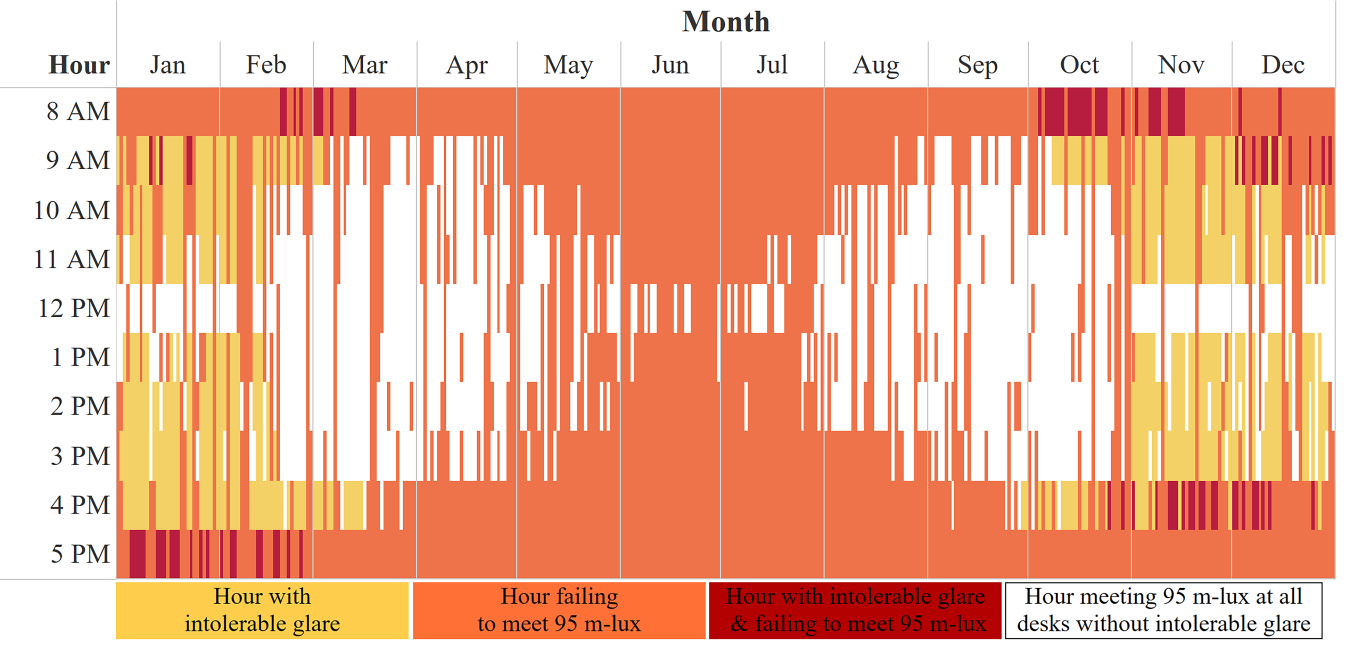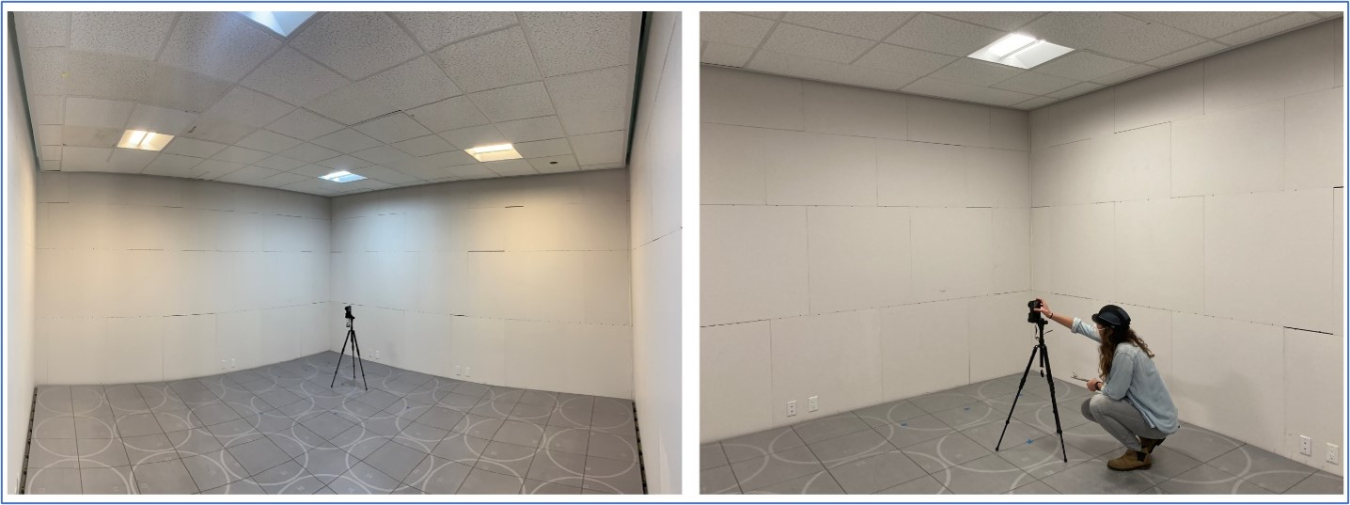Research exploring human physiological responses to light and continued advances in SSL technology have aligned with an increasing demand for buildings that support human health and wellness. New recommendations of indoor light exposure to support physiology, sleep, and wakefulness in adults are now included in popular building certification programs, like the WELL Building Standard, where the wellness of building occupants is the primary focus of architectural design. Designing to meet these recommendations will require higher light levels than those typically selected for visual tasks, which may result in increased energy usage from overhead electric lighting systems. Daylight and tunable electric lighting systems are expected to counter increases in energy but their impact on total whole-building energy use needs further investigation.
INTEGRATED DAYLIGHTING, ELECTRIC LIGHTING, AND CONTROLS RESEARCH
A DOE-funded study of the potential electrical and thermal energy impacts of using daylight and electric light to meet existing recommendations for human health and well-being was conducted by Pacific Northwest National Laboratory (PNNL) in collaboration with researchers from Lawrence Berkeley National Laboratory, the University of Washington, and the University of Oregon. New software tools for modeling the spectral characteristics of light, like Adaptive Lighting for Alertness (ALFA), were leveraged to conduct annual daylighting, electric lighting, heating, and cooling simulations for office applications.
The Impact of Circadian Lighting Design Strategies on Lighting and Cooling Energy of an Office Space (Report, February 2023)

Hourly daylight simulations of an open office space where at least one or more workstations are estimated to have intolerable glare, insufficient equivalent melanopic lux (EML, units of m-lux) to meet recommendations, or both. The WELL Building Standard suggests that applications meeting existing daylight requirements will also provide at least 95 m-lux to all occupants.
DEVELOPMENT AND COMMERCIALIZATION OF LIGHTING DESIGN TOOLS
Work completed as part of the integrated daylighting, electric lighting, and controls research study highlighted the deficiencies in existing software used for simulating the spectral characteristics of daylight and electric light sources. Traditional lighting software has not kept pace with advances in SSL technology, lighting metrics, lighting recommendations, and computational power over the last decade.

A DOE-funded project conducted by PNNL and Solemma (the software developers of ALFA) is designed to improve lighting application efficiency through the advancement of software for the simulation of dynamic architectural lighting systems. The project expands on the previous work by PNNL by creating a defined feedback loop whereby the emerging research from PNNL can inform new developments in ALFA. Developments will be tested in laboratory and field validation studies as well as through user-group evaluations.
RELATED RESOURCES
Energy Impacts of Human Health and Wellness Recommendations: Considering Daylight and Electric Light (Conference paper, August 2022)
Assessing the accuracy of emerging lighting simulation tools: Predicting spectral power distribution and illuminance (Conference paper, August 2022)
Determining Critical Points To Control Electric Lighting To Meet Circadian Lighting Requirements And Minimize Energy Use (Conference paper, July 2022)
The Effect of Spectral Resolution of Light Sources on Photopic and α-opic Quantities (Conference paper, March 2021)
Energy impact of human health and wellness lighting recommendations for office and classroom applications (Journal article, August 2020)

